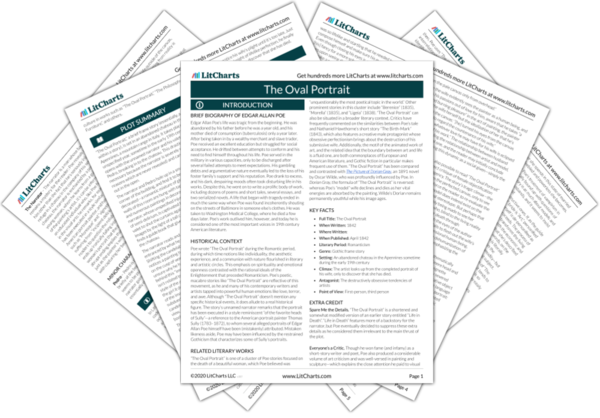Life vs. Art
Edgar Allan Poe’s “The Oval Portrait” is a frame story (essentially, a story within a story), which centers around life and art. The outer story follows the unnamed narrator as he spends the night in an abandoned chateau in the mountains. While there, he admires the impressive paintings that adorn the walls and becomes particularly taken with a portrait of a beautiful young woman, which is encased in an oval frame. The inner story…
read analysis of Life vs. ArtAgency and Objectification
“The Oval Portrait” relies on—and, arguably, critiques—the traditional pairing of male artist and female model, where masculinity tends to be associated with inspired creativity, activity, and seeing, and femininity with creative inspiration, passivity, and being seen. The early 19th century, when Poe was writing, was a largely patriarchal era during which time male-produced literature and art tended to underplay or even ignore female agency. At first glance, this seems true of “The Oval Portrait,” too…
read analysis of Agency and ObjectificationVampirism
The trope of the vampire is a commonplace of Gothic fiction. Though it stereotypically involves the drinking of blood by the fang-y undead and the subsequent siring of new immortals, these are only its outward attributes. In essence, vampires are individuals who drain or absorb people’s vital energies in order to revitalize themselves—gore, the supernatural, and dodgy Transylvanian accents are optional extras.
As might be expected from Poe’s trademark style, the vampirism in “The Oval…
read analysis of Vampirism







